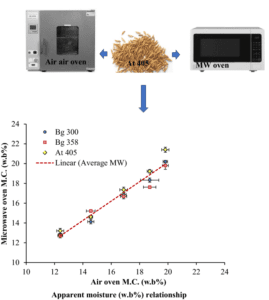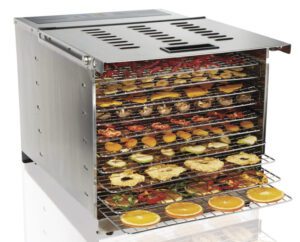What is Food Drying
- There are many methods for preservation as discussed in the previous post. Drying is one of the commonly used drying methods.
- Technically, Drying is defined as the process of a mass transfer process consisting of the removal of water (moisture or gases) content by evaporation from solid or liquid foods
- This process is often used as a final production step before selling or packaging products
- Drying food is one of the oldest methods of preserving it
- This technique involves removing the moisture from food to make it last longer without refrigeration or canning
- It is also an excellent way to reduce food waste by preserving excess produce from your garden or farmer’s market haul
- In this blog post, we will explore the various food-drying techniques that have been used throughout history.

Types of Food Drying
- Drying food is a simple and effective way to preserve it. It can be done using traditional methods like sun drying, or modern techniques like oven drying, dehydrating, and freeze-drying
- Each method has its advantages and disadvantages, depending on the type of food and the resources available. So, if you have excess produce or want to reduce food waste, consider drying it to make it last longer
- Sundrying
- Oven drying
- Oven Drying
- Dehydrator
- Freeze drying

Sun Drying
- Sun drying is the oldest and most traditional method of food drying
- It involves exposing food to direct sunlight to remove moisture
- Sun drying requires warm and dry weather conditions to be successful
- It is best suited for fruits, vegetables, and meats that are cut into thin slices
- Food that is sun-dried should be covered with cheesecloth or a fine mesh to prevent insects and debris from contaminating it
- Sun drying can take up to several days, depending on the type of food and weather conditions.

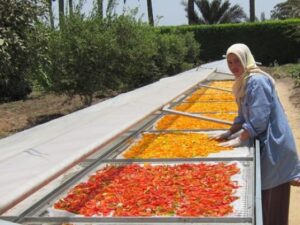
Oven Drying
- Oven drying is a modern technique of food drying that is faster than sun drying
- It involves using an oven to remove moisture from food
- This is best suited for herbs, fruits, and vegetables
- To oven-dry food, the oven is set at a low temperature (around 140°F or 60°C) to prevent cooking the food
- The food is then placed on a baking sheet or wire rack and left in the oven for several hours, checking occasionally until the food is dry.
- Oven drying is often used to preserve food, such as fruits, vegetables, and herbs, as it can help to prevent the growth of mold and bacteria
- It can also be used to dry out wet materials, such as wood or clothing, or to extract moisture from substances, such as oil or chemicals.
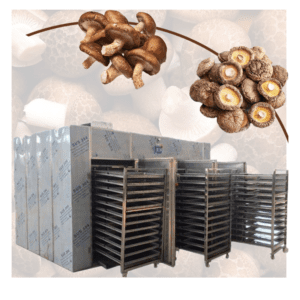
- Oven drying is a method of removing moisture from materials or substances by exposing them to high temperatures in an oven
- This process is commonly used in various industries such as food processing, pharmaceuticals, and manufacturing
- The oven drying process involves placing the material to be dried on a tray or rack and then placing it inside an oven set at a specific temperature. The temperature and duration of the drying process depending on the type of material being dried and the desired level of dryness
- One of the advantages of oven drying is that it is a relatively fast and efficient method of drying. However, it may not be suitable for materials that are sensitive to high temperatures or that require a more gentle drying process
- It is important to follow proper safety precautions when using an oven for drying, such as ensuring that the oven is properly ventilated and not overloading it with too much material
Dehydrator
- A food dehydrator is an electric appliance designed for drying food
- It works by circulating hot and dry air over the food, which removes moisture from it
- Dehydrators come with trays that can be used to layer the food
- The temperature and time required for drying depend on the type of food and the dehydrator used. Dehydrators are a great option for drying fruits, vegetables, herbs, and even meat jerky.
Freeze Drying
- Freeze drying is a modern and expensive food drying technique that involves freezing food and then removing the moisture by placing it under a vacuum
- Freeze-drying is best suited for preserving delicate foods such as berries, mushrooms, and seafood
- It is a relatively gentle process that preserves the color, texture, and flavor of the food.
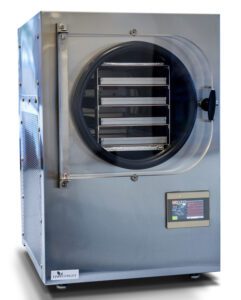
Benefits of Food Drying
Food drying is an age-old method of preserving food that has been practiced for centuries. This technique involves removing the moisture from food to extend its shelf life and prevent it from spoiling. Drying food has several benefits, including:
Extended shelf life
- One of the primary benefits of food drying is that it extends the shelf life of food. By removing moisture, the growth of bacteria, yeast, and mold is slowed down, which prevents the food from spoiling. Dried food can last for several months or even years if stored properly.
Preservation of Nutrients
- Drying food preserves the nutrients and enzymes present in it, as it does not involve the use of high temperatures that can destroy or denature these important components
- The nutrients and enzymes in dried food remain intact, making it a great source of vitamins, minerals, and fiber.
Convenience
- Dried foods can be used in a variety of ways and can be rehydrated to make soups, stews, and other dishes
- They can also be used as a snack, added to trail mix, or used as a topping for salads and other dishes
- Dried food is lightweight, compact, and easy to store, making it a convenient food option for camping, hiking, and other outdoor activities
- It is also an excellent option for those who do not have access to refrigeration or want to reduce food waste
- Drying food helps to preserve the nutrients in the food
- Unlike other preservation methods like canning, drying does not require high heat or cooking, which can lead to the loss of vitamins and minerals in the food.
Cost-effective
- Drying food can be a cost-effective way to preserve excess produce from your garden or farmer’s market haul
- It can also help you save money by allowing you to purchase food in bulk when it is in season and dry it for use later in the year.
- Drying food at home is a cost-effective way to preserve food
- It allows you to buy fruits and vegetables in bulk when they are in season and cheaper, and then dry them for later us
Versatility:
- Dried food can be used in a variety of ways, such as adding it to soups, stews, or salads, making snacks, or rehydrating it to use in recipes. It can also be ground into a powder to use as a seasoning or flavoring.
Conclusion
- Food drying is an effective method of food preservation that offers numerous benefits, including nutrient retention, portability, convenience, intense flavor, waste reduction, and cost savings.

